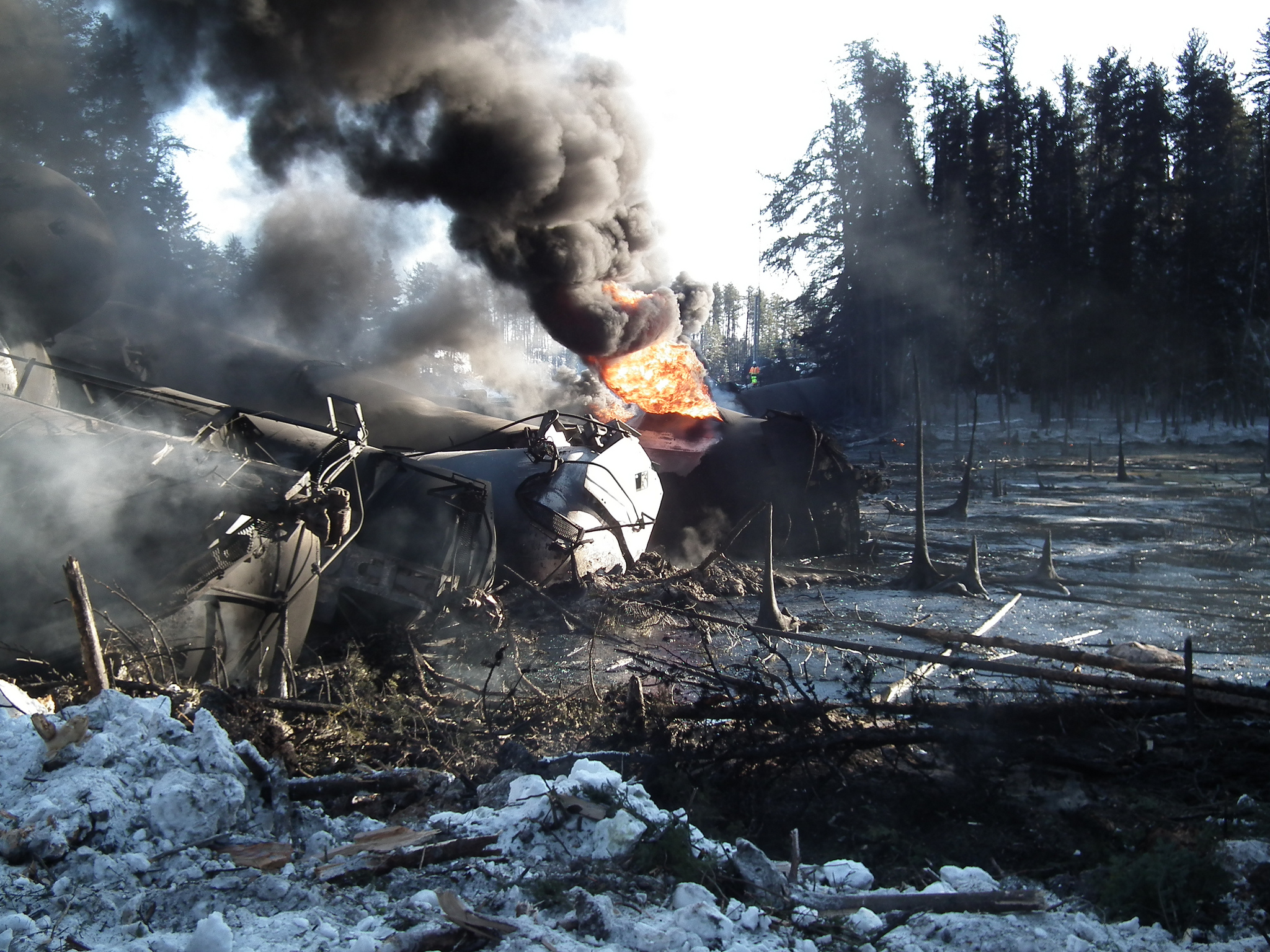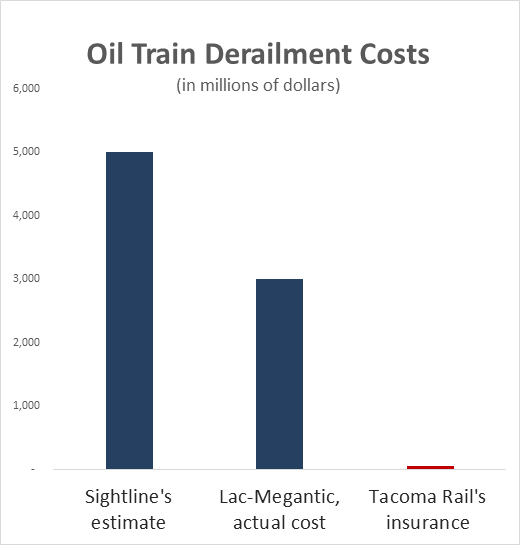[prettyquote align=right]”Tacoma, WA, is now the Northwest city most threatened by #oiltrains.”[/prettyquote]
With no fanfare whatsoever, Tacoma has claimed a new, though dubious, distinction: it is now the Northwest city most threatened by oil trains. As new research by Sightline reveals, a combined 80,000 barrels per day of crude oil—about 8 loaded trains per week—are permitted to travel on a publicly owned railway into the heart of Tacoma’s industrial area. In addition, another 15 loaded trains bound for north Puget Sound refineries can also pass through the city each week.
No other urban center in the region plays host to so much oil train capacity inside city limits.
The risks of oil trains have been made plain by the 10 catastrophic explosions that North America has seen in the last two years, to say nothing of the billion-dollar risk to the public that is virtually uninsured. The two terminals put the people of Tacoma directly in harm’s way of a fiery derailment, the likes of which have become all-too-common in the news.
Uncommonly, though, Tacoma’s local rail system is publicly owned, so unlike other places that see oil trains, the City of Destiny also bears the risk of financial catastrophe from an oil train derailment. It’s a risk so severe that even a single accident might bankrupt the city.
Tacoma is the home to both the US Oil Refinery and Targa Sound Terminal, each with the capacity to receive roughly 40,000 barrels of oil per day by rail. US Oil has been receiving loaded oil trains since late 2012. Targa was granted authority to expand in December 2013, yet the public was almost entirely unaware of it until now.
Both operate with the support of Tacoma Rail, the city’s publicly owned railway.
Neither project received any meaningful review or input from the public.

Nestled within the Port of Tacoma’s land, but sitting on private property, US Oil operates the smallest of the Northwest refineries, with a rated capacity of 39,000 barrels per day. In 2012, the plant’s owners spent $8 million building a new rail yard. Based on oil train movement data reported by BNSF Railway and figures from the Washington Department of Ecology, Sightline estimates that the facility can accept roughly 40,000 barrels of crude per day, on average, from oil trains.
Also located adjacent to the Port of Tacoma, Targa Resources, a Texas-based transportation, storage, and wholesale energy company, has shifted focus toward crude-oil-by-rail operations, dramatically expanding their ability to simultaneously unload railcars in late 2014. Permits indicate that the terminal now has handling capacity to move 40,000 barrels of crude oil per day brought in on trains and moved onto marine vessels. As of this writing, however, Targa had not yet secured customers to use its facility and had not yet begun receiving oil trains.
[prettyquote align=right]”It’s a risk so severe that even a single #oiltrain accident might bankrupt the city.”[/prettyquote]
The oil trains run on a publicly owned rail line: Tacoma Rail. A division of Tacoma Public Utilities, the railroad manages rail switching and terminal service. It picks up oil trains from the BNSF mainline and moves them to their destinations in Tacoma’s industrial area. The rail line is dependent on its industrial customers for earnings, but the lines of authority and accountability string back to the Public Utility Board and City.
Oil train derailments and fires are distressingly common and incredibly destructive. They can also be extremely expensive. Officials estimate that the deadly oil train explosion in Lac–Mégantic, Quebec will cost roughly $3 billion. Sightline’s review of rail mishaps and federal cost estimates reveals that an oil train fire in an urban area could easily result in $5 billion in damages. Federal regulators and analysts have come to similar conclusions.
Yet it appears that Tacoma Rail’s operations are covered only by a $60 million self-insurance policy. It’s provided by Tacoma Public Utilities to cover both the railroad’s operations and the city’s Power and Water divisions. Yet $60 million might not be enough to cover the damages from even a modest oil spill (and leaks are quite common on oil trains), much less the multi-billion dollar damages that could be incurred by an actual oil train fire inside city limits.

Railroads are responsible for the costs of derailments and damages inflicted on third parties, not the shipper or the receiving site or anybody else. So because Tacoma Rail is a city-owned entity, it’s Tacoma’s taxpayers who are underwriting the risk attached to every oil train running on the city’s tracks. Given the enormous costs connected to oil train mishaps, it’s reasonable to suppose that even a minor derailment could bankrupt the public utility—and thereby the city—in a heartbeat.
Consider that Tacoma’s entire 2015–2016 budget anticipates just over $3 billion in revenue needed to fund city expenses. The cost of an incident like the one in the rural town of Lac–Mégantic would therefore be equivalent to the entire city budget for two years. It would roughly total the Utility portion of the budget for more than four years.
According to federal databases, Tacoma Rail has notched up a half-dozen freight derailments since 2007. That’s not a terrible incident rate for a small railroad, but when dealing with explosive crude oil, even a single incident could change the city forever.
John Abbotts contributed research to this article.

Comments are closed.